Attached files
| file | filename |
|---|---|
| 8-K - FORM 8-K - PIONEER ENERGY SERVICES CORP | d8k.htm |
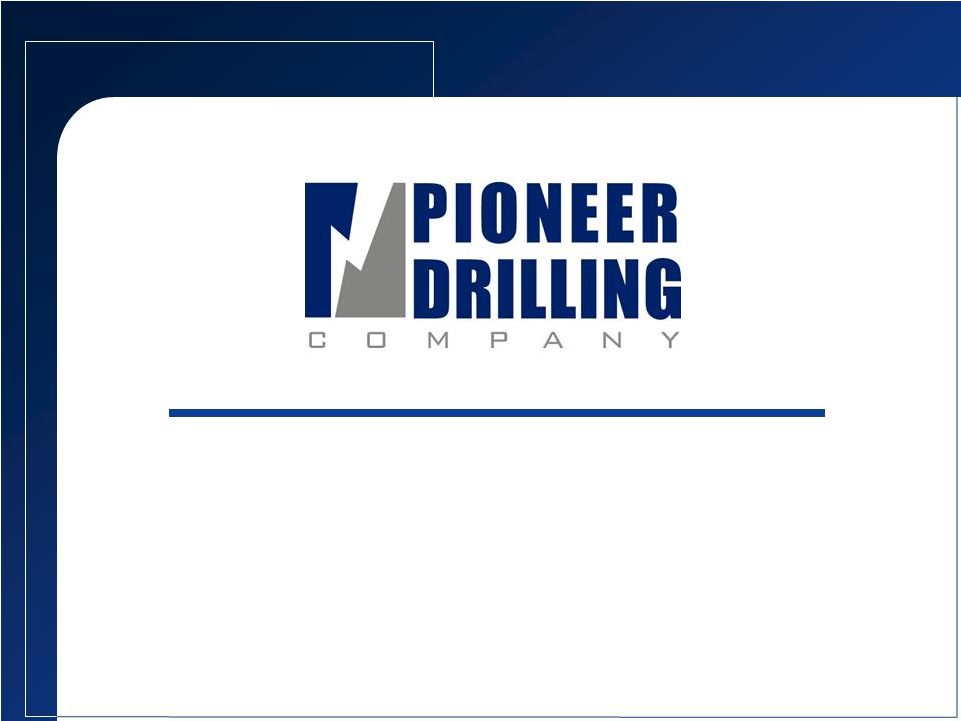 UBS Global Oil &
Gas Conference May 25, 2010
(NYSE AMEX: PDC)
www.pioneerdrlg.com
Exhibit 99.1 |
 2
Forward-looking Statements
This presentation contains various forward-looking statements and information
that are based on
management’s current
expectations and assumptions about future events. Forward-looking statements
are generally accompanied by words such as
“estimate,”
“project,” “predict,”
“expect,”
“anticipate,”
“plan,
”
“intend,”
“seek,”
“will,”
“should,”
“goal,”
and other words that convey the uncertainty of future
events and outcomes. Forward-looking information includes , among other matters,
statements regarding the
Company’s anticipated growth, quality of assets, rig utilization rate, capital spending by oil
and gas companies, production rates, the Company's growth strategy, and the Company's
international operations. Although the Company believes that the expectations
and assumptions reflected in such forward-looking statements are
reasonable, it can give no assurance that such expectations and assumptions
will prove to have been correct. Such statements are subject to certain risks, uncertainties
and assumptions, including, among others: general and regional economic conditions
and industry trends; the continued strength of the contract land drilling
industry in the geographic areas where the Company operates; decisions about
onshore exploration and development projects to be made by oil and gas
companies; the highly competitive nature of the contract land drilling business; the Company’s
future financial performance, including availability, terms and deployment of
capital; the continued availability of qualified personnel; changes in
governmental regulations, including those relating to the environment; the
political, economic and other uncertainties encountered in the Company's
international operations and other risks, contingencies and uncertainties, most of
which are difficult to predict and many of which are beyond our control.
Should one or more of these risks, contingencies or uncertainties materialize,
or should underlying assumptions prove incorrect, actual results may vary
materially from those expected. Many of these factors have been discussed in more
detail in the Company's annual reports on Form 10-K for the fiscal year
ended December 31, 2009 and form 10-Q for the three months ended, March
31, 2010. Unpredictable or unknown factors that the Company has not discussed
in this presentation or in its filings with the Securities and Exchange Commission could also
have material adverse effects on actual results of matters that are the subject of
the forward-looking statements. All forward-looking statements speak
only as the date on which they are made and the Company undertakes no duty to
update or revise any forward-looking statements. We advise our
shareholders to use caution and common sense when considering our forward looking
statements. |
 Overview
Ticker Symbol:
PDC
Market Cap:
$299 million (May 21, 2010)
Stock price:
$5.53 (May 21, 2010)
Average 3-month daily
trading volume:
878,000 shares
Public float:
Approximately 54 million shares
Employees:
2,200
Headquarters:
San Antonio, Texas
3 |
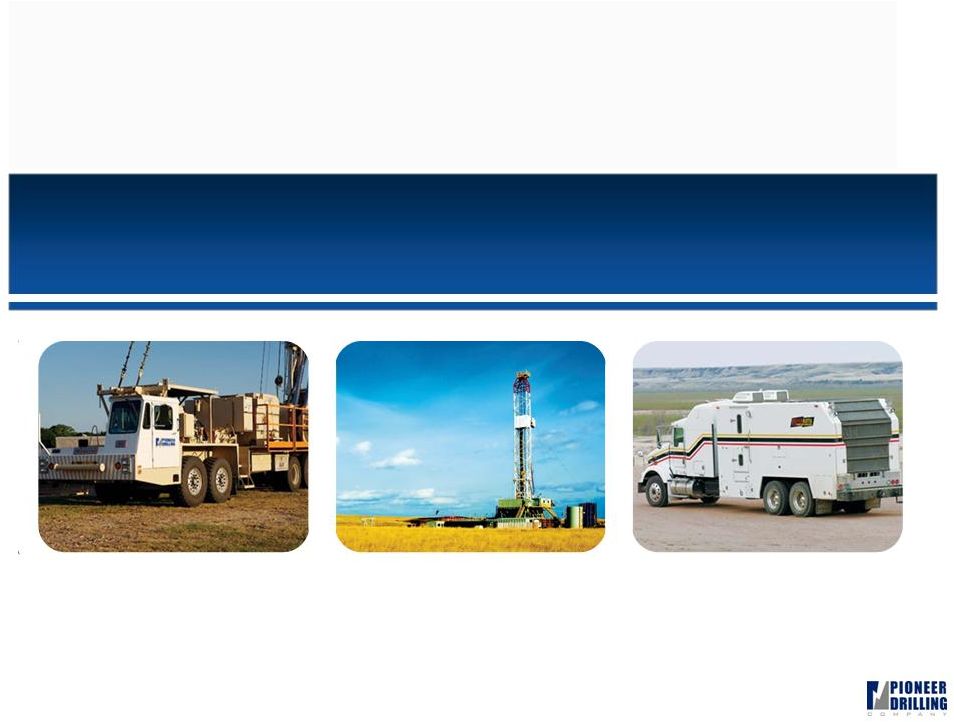 4
Pioneer Drilling Overview |
 Investment Considerations
Rig fleet trading at a significant discount to replacement value
Focused on protecting cash flow from softening gas prices
Approximately
50%
of
working
rigs
on
term
contracts
(1)
Approximately
50%
of
working
rigs
in
shale
plays
(1)
Over
50%
of
working
rigs
drilling
for
oil
(1)
Balance sheet restructured for maximum flexibility and liquidity
Continued organic growth opportunities in three core businesses:
land drilling, well services and wireline
5
(1) Based on information provided in 1 quarter 2010 conference call; company
research as of May 4, 2010 st |
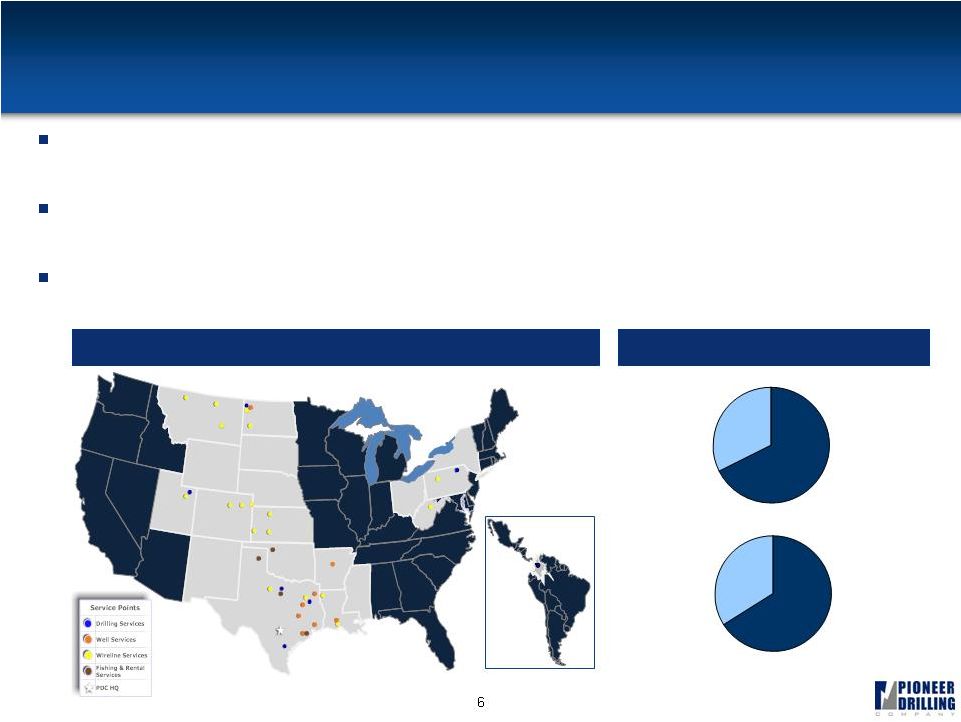 Colombia
Overview of Pioneer
9th
largest
contract
driller,
6th
largest
well
services
provider
and
a
significant
wireline
provider in the U.S.
71 high-quality and well-maintained land drilling rigs among the youngest in
the industry
Best-in-class
production
services
assets
include
74
workover
rigs
and
71
wireline
units
Diversified Energy Services Provider
2009 Results
Total Revenue: $326 million
Total Segment Margin: $110 million
Drilling
Services
Production
Services
Drilling
Services
Production
Services
32%
68%
34%
66% |
 Corporate Strategy
Focused on value-added organic growth in three core businesses:
land drilling, well services and wireline
Maintaining emphasis on new-build equipment and state-of-the-art
technology
Focused on increasing mix of oil-driven business
Continuing to pursue further international expansion
Maintain leadership position in accident-free work environment
7 |
 Recent Developments
8
Focused on the most attractive shale plays and oil markets
Position rigs to achieve highest internal rate of return
Balanced mix of oil and natural gas exposure
Locking in rig utilization with term contracts
Increased term contracts from 4 to 23 since beginning of year
5 more term contracts expected by late May
6 of 8 rigs in Colombia are contracted for 3-year term contracts
6
th
and 7
th
rig being prepared for Marcellus
8
th
rig rigging up on location in Colombia
8
th
rig rigging up on location in Bakken |
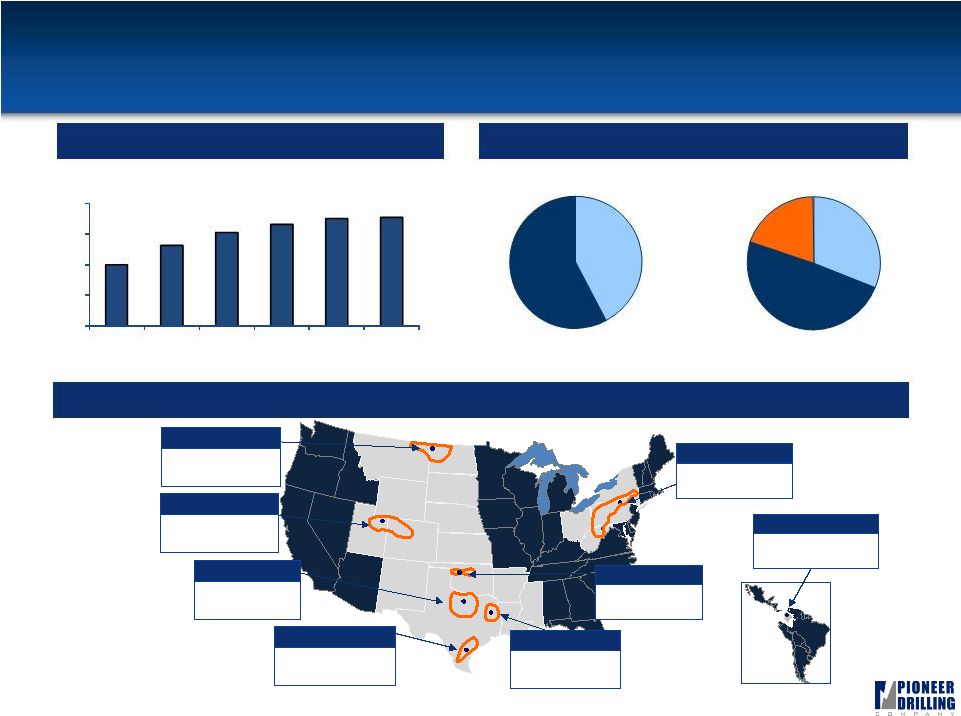 Drilling Services-Segment Overview
9
Historical Fleet Growth
Locations
Current Rig Fleet Mix
Note:
Rig
count
for
calendar
years
2004,
2005
and
2006
represent
fiscal
year
ended
March
31,
2005,
2006
and 2007.
* Cold-stacked
17 rigs
Avg
HP: 1,065
South Texas
17 rigs
Avg
HP: 926
East Texas
Electric
Mechanical
550-999
HP
1,000-1,499
HP
1,500-2,000
HP
8 rigs
Avg
HP: 1,281
North Dakota
5 rigs
Avg
HP: 950
North Texas
5 rigs
Avg
HP: 950
Utah
5 rigs
Avg
HP: 1,000
Appalachia
8 rigs
Avg
HP: 1,375
Colombia
6 rigs
Avg
HP: 600
Oklahoma*
40
52
61
66
70
71
0
20
40
60
80
2004
2005
2006
2007
2008
2009
58%
42%
49%
31%
20% |
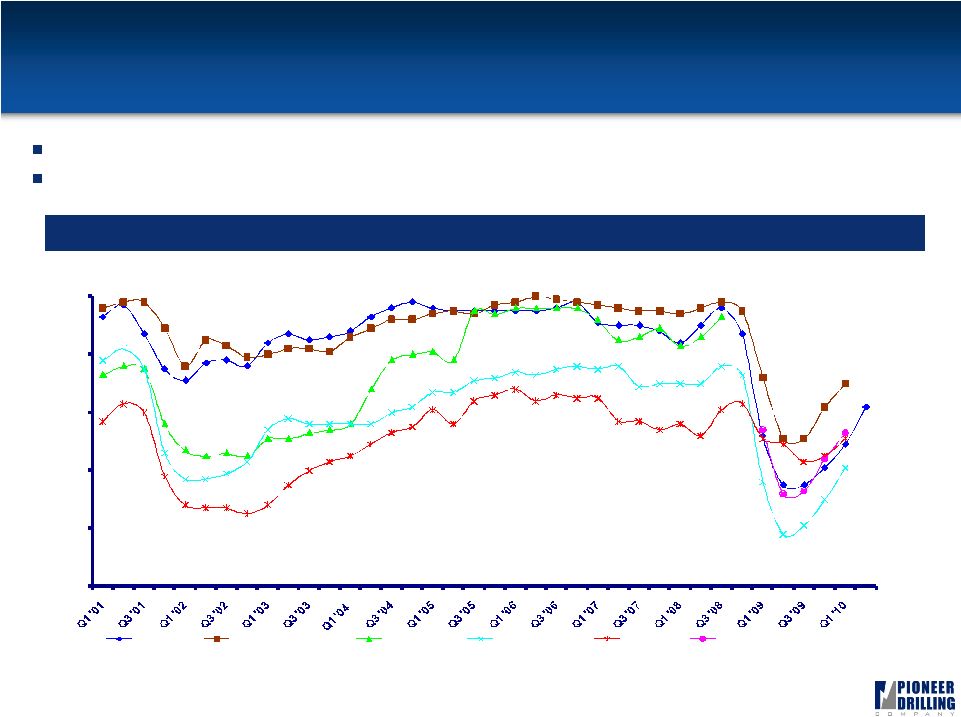 0%
20%
40%
60%
80%
100%
Pioneer
Helmerich & Payne
Grey Wolf
Patterson-UTI
Nabors
Precision (U.S.)
10
Strong Utilization Through the Cycles
Averaged 85% utilization through cycles since 2001, comparing favorably to
peers Utilization
has
rebounded
from
a
monthly
low
of
33%
in
June
2009
to
62%
currently
(1)
Comparable Utilization Rates
(1)
Source: Helmerich & Payne, Grey Wolf, Patterson-UTI, & Precision Drilling data
consists of U.S. domestic utilization rates derived from Form 10-K, Form 10-Q reports, & press releases. Nabors utilization
rates for worldwide land fleet obtained from public documents and industry analysts. Precision
Drilling acquired Grey Wolf in December 2008. Pioneer Drilling utilization rates include Colombian operations
beginning Q3 2007.
(1) PDC utilization as of May 6, 2010. |
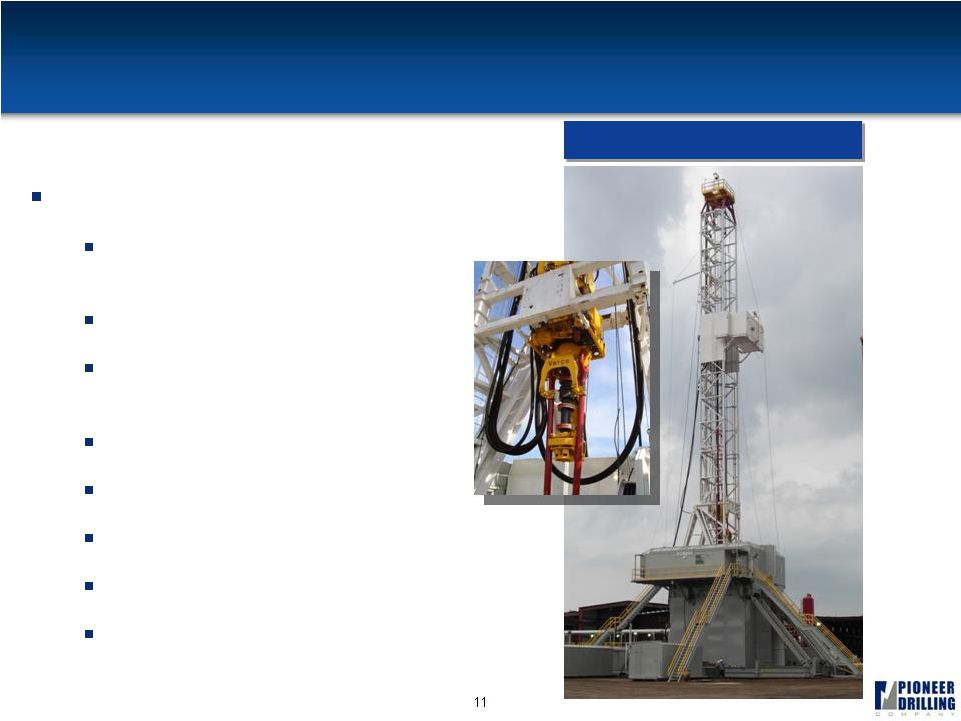 Modern, Efficient Drilling Fleet
Over 75% of fleet is shale capable
31 new builds (44%) since 2001 with
most constructed during 2004 -
2006
69% with 1,000 HP -
2,000 HP
29 top drives (41%) with another 7 on
order (51%)
63% with iron roughnecks
42% electric
55% with mobile or fast-pace subs
9 walking/skidding systems installed
10 pairs of 1300/1600 HP mud pumps
50 Series Rig |
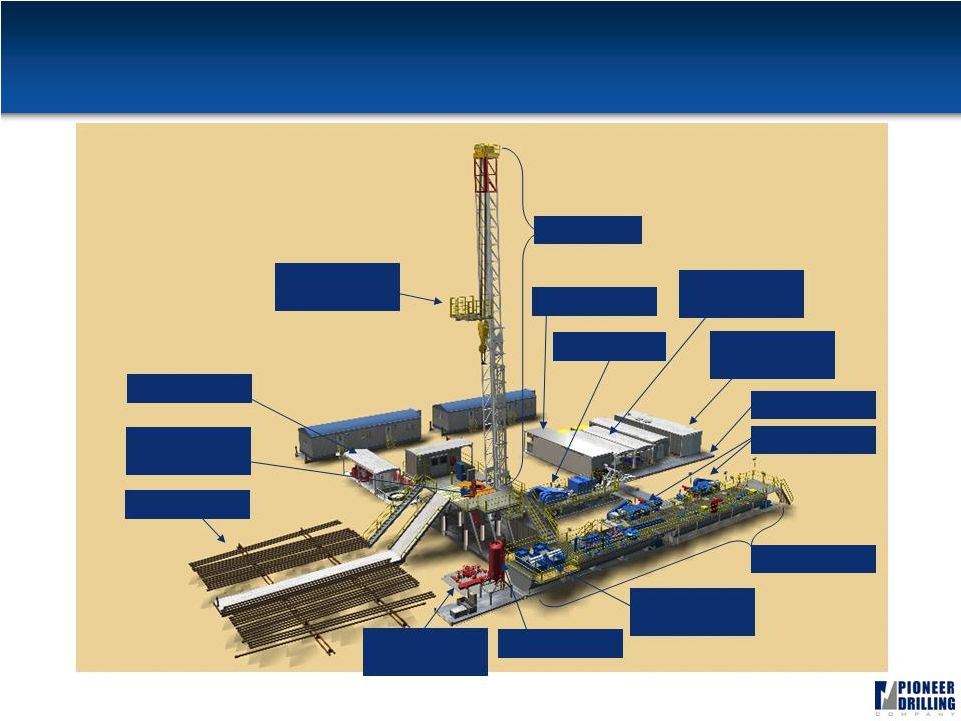 60 Series Rig
12
Mast
Traveling
Equipment
Mud Tanks
Handling
Equipment
Mud Pumps
Mud Cleaning
Equipment
Pipe Racks
Accumulator
Gas Buster
Choke
Manifold
SCR House
Fuel-Water
Tank
Power
Package
Suitcases
Drawworks |
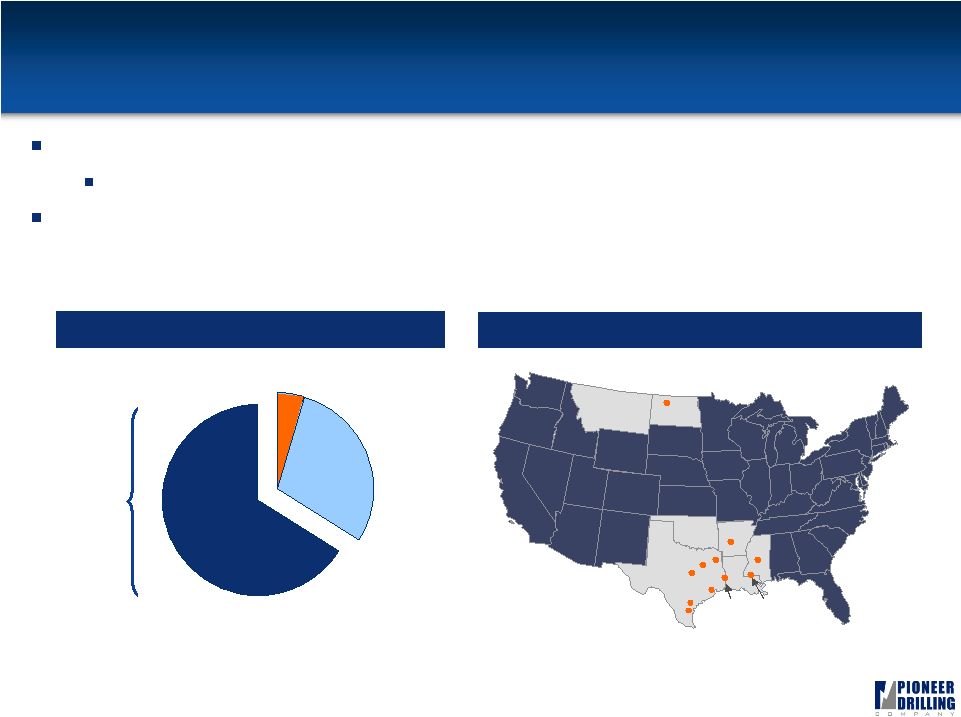 66%
Workover Fleet Overview
13
One of the
newest
and
most
highly
capable
workover
fleets
in
the
industry
Sixty-nine 550 HP rigs and four
600
HP
rigs
with
an
average
age
of
2.4
years
Initial entry via WEDGE acquisition in 2008 with subsequent expansion into the
Bakken, Fayetteville, Haynesville and Eagle Ford shales
Workover
Fleet Age
Workover
Locations
Average year in service: 2007
66%
2007 or
newer
31%
3%
Williston
Bryan
Palestine
Longview
New Iberia
El Campo
Liberty
Kenedy
Conway
Laurel
2005-2006
2002-2004
Alice |
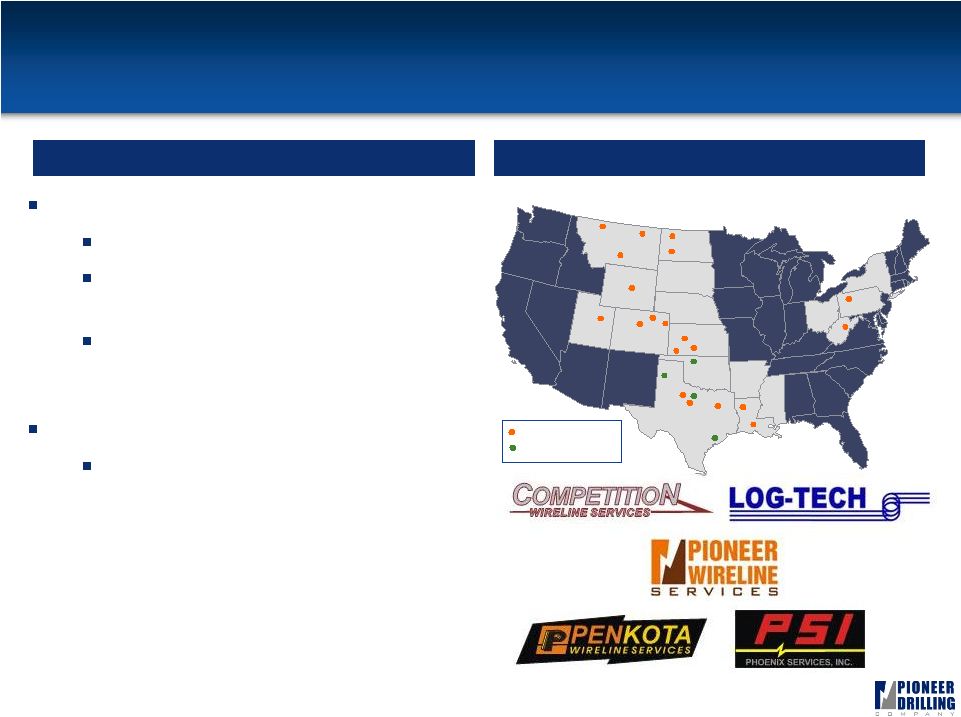 Wireline
and Fishing & Rental Overview
14
Wireline
Services
Open
and
cased-hole
wireline
services
71
wireline
units
with
an
average
age
of
4.2 years
Initial entry via WEDGE acquisition with
subsequent expansion into the Barnett,
Marcellus and Haynesville shales
Fishing & Rental Services
Range of specialized services and
equipment that are utilized on a non-
routine basis for both drilling and well
servicing operations
Overview
Locations
Williston
Dickinson
Cut Bank
Billings
Havre
Tyler
Bossier City
Broussard
Graham
Alvarado
Roosevelt
Pratt
Liberal
Hays
Casper
Buckhannon
Punxsutawney
Ft. Morgan
Brighton
Wray
Woodward
Pampa
Springtown
El Campo
Wireline
Fishing & Rental |
 Blue Chip Customers
& Strong Safety Record 15
Key component of employee culture
Strengthens customer relationships
Consistently beat the IADC average
for recordable incidents
Total recordable incident rate
decreased 65% since 2005
Earned 100% Health, Safety,
Environment & Quality (HSEQ) score
from Ecopetrol
Safety
Long-standing Relationships |
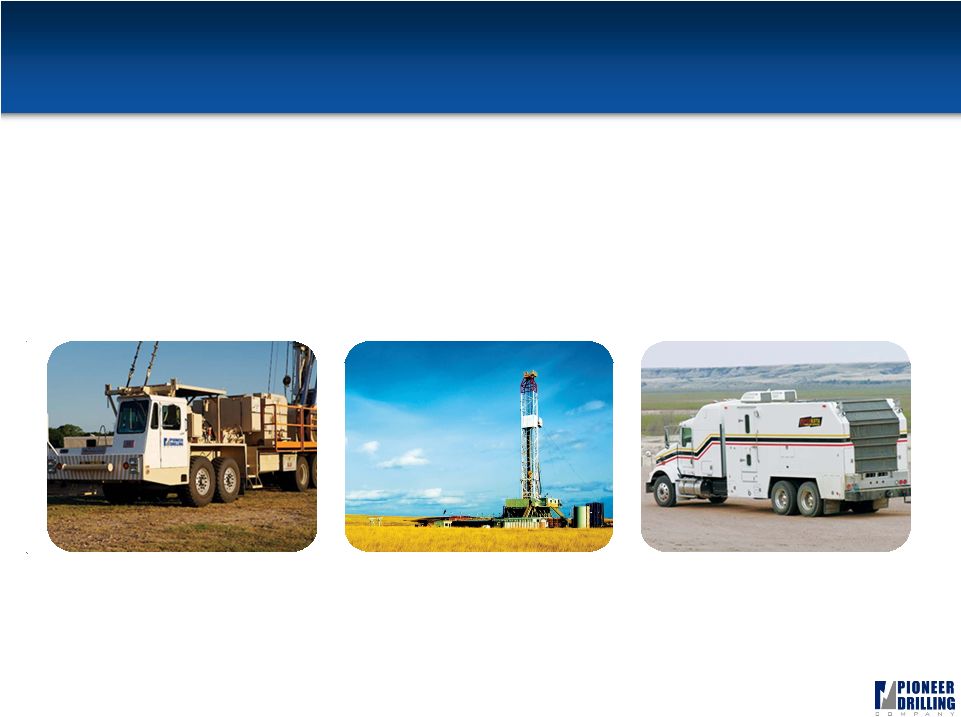 16
Industry and Market Conditions |
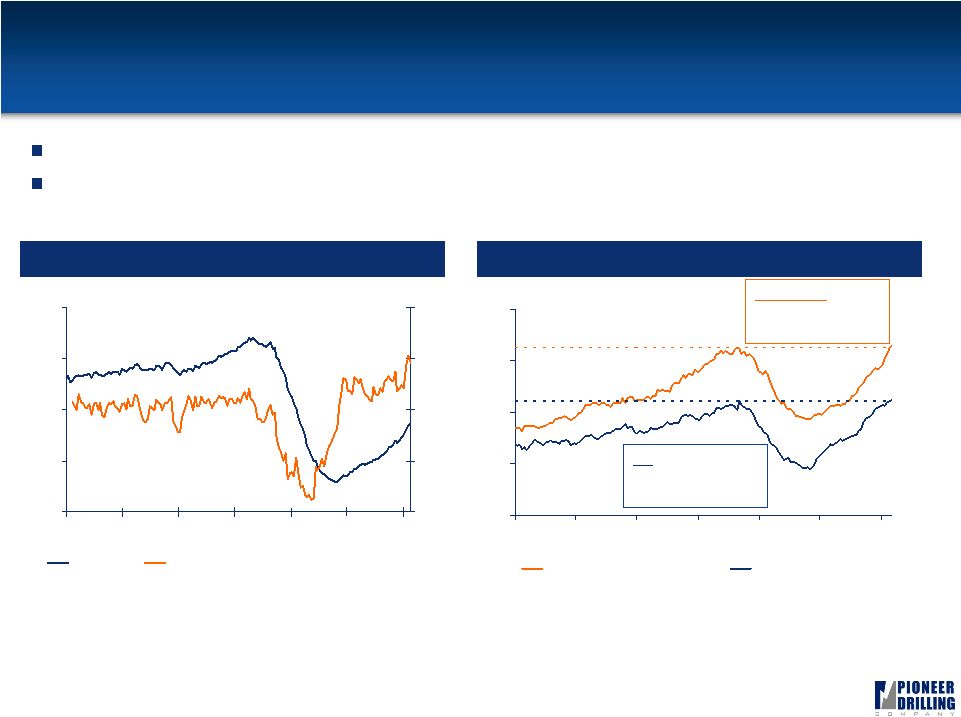 Recovery in U.S. Land Rig Count
1
17
Steady rig count improvement during the second half of 2009 and 2010 YTD
Horizontal and oil rig counts have returned to Fall 2008 peak levels
Land Rig Count
Horizontal & Oil Rig Count
Source: Baker Hughes.
Source: Baker Hughes.
600
1,000
1,400
1,800
2,200
Jan-07
Jul-07
Jan-08
Jul-08
Jan-09
Jul-09
Jan-10
(5.0%)
(2.5%)
0.0%
2.5%
5.0%
Land Rigs
BHI Rolling 4-week Avg. Weekly Change
0
200
400
600
800
Jan-07
Jul-07
Jan-08
Jul-08
Jan-09
Jul-09
Jan-10
U.S. Horizontal Rig Count
U.S. Oil Rig Count
Horizontal
Fall ’08 Peak: 650
Current: 658
Oil
Fall ’08 Peak: 442
Current: 440 |
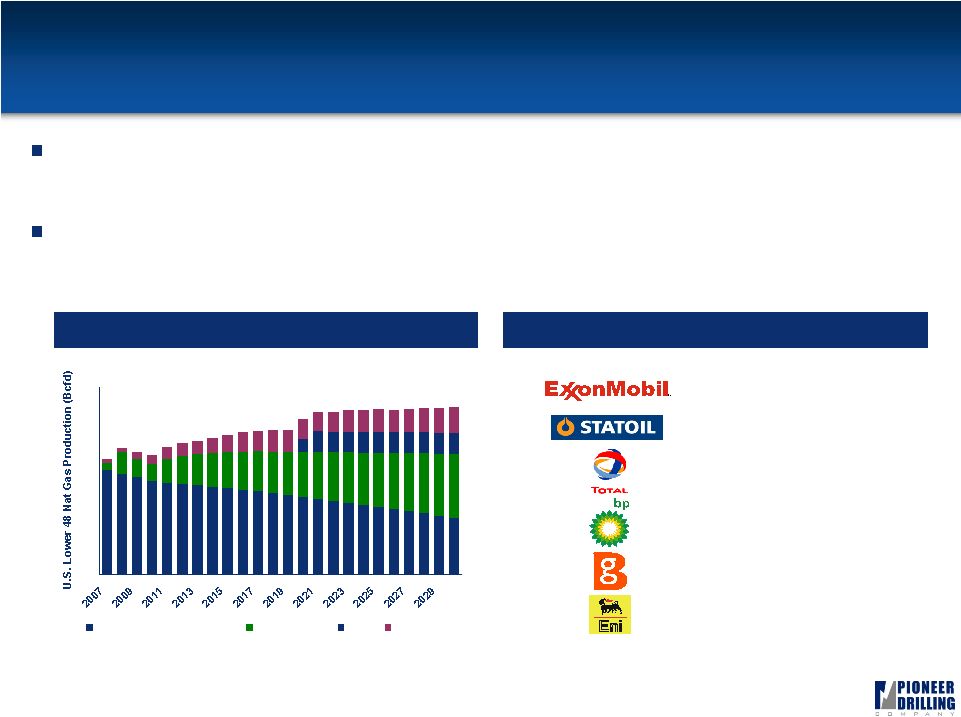 $40,991
Million
12/14/2009
$3,375
Million
11/11/2008
$2,250
Million
12/30/2009
$1,900
Million
9/2/2008
$1,050
Million
6/30/2009
$280
Million
5/8/2009
30
35
40
45
50
55
60
65
70
75
80
Base Production (all sources)
Unconventional
Alaska
LNG Imports
Benefits of Growing Shale Plays
1
18
Service firms stand to benefit from shale production due to its lower risk
development and increased service intensity (up to 3 -
5x conventional)
Reintroduction of the Majors should provide increased capital discipline in
the U.S. market, resulting in greater stability and shallower cycles
Recent U.S. Shale Investments
Source: Base
production,
Alaska,
and
LNG
import
data
–
EIA
AEO
2008.
Growing Importance of Shale |
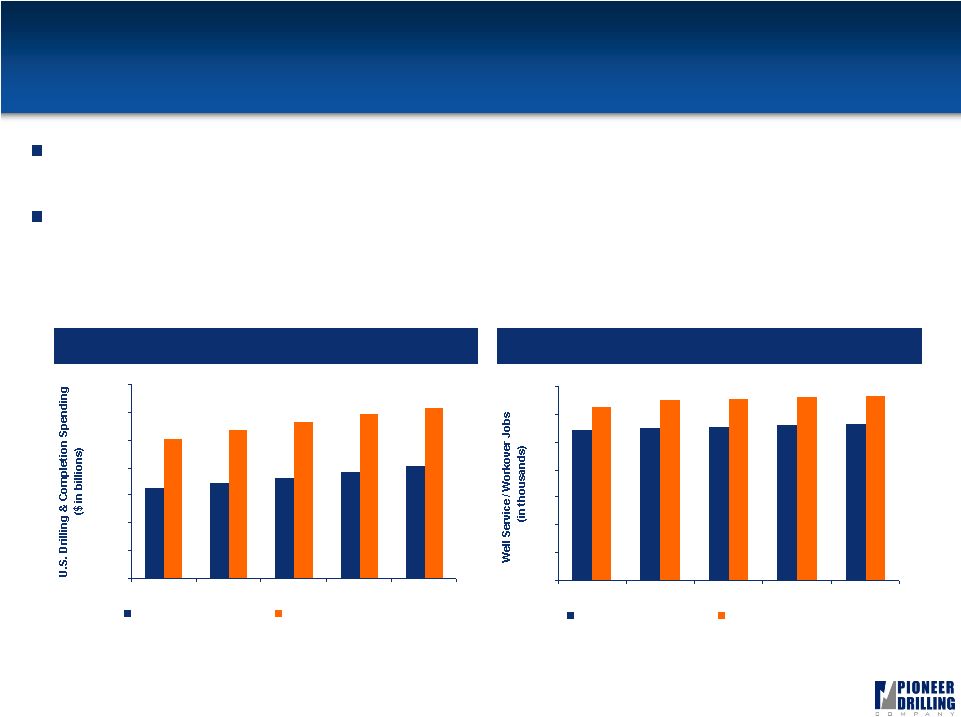 Conclusion: Improving Oil Service Outlook
1
19
North American oilfield services pricing and activity appear to have
bottomed
Most analysts expect a moderate recovery in upstream spending and
drilling activity over the next few years
Upstream Spending Outlook
Well Service / Workover Jobs Outlook
Source: Spears & Associates.
Source: Spears & Associates.
62.6
65.0
65.5
65.9
66.3
56.3
54.2
54.9
55.4
55.9
0
10
20
30
40
50
60
70
2010
2011
2012
2013
2014
June 2009 Estimate
December 2009 Estimate
$100.3
$107.0
$112.6
$118.5
$123.1
$76.8
$72.8
$68.9
$65.1
$81.0
$-
$20
$40
$60
$80
$100
$120
$140
2010
2011
2012
2013
2014
June 2009 Estimate
December 2009 Estimate |
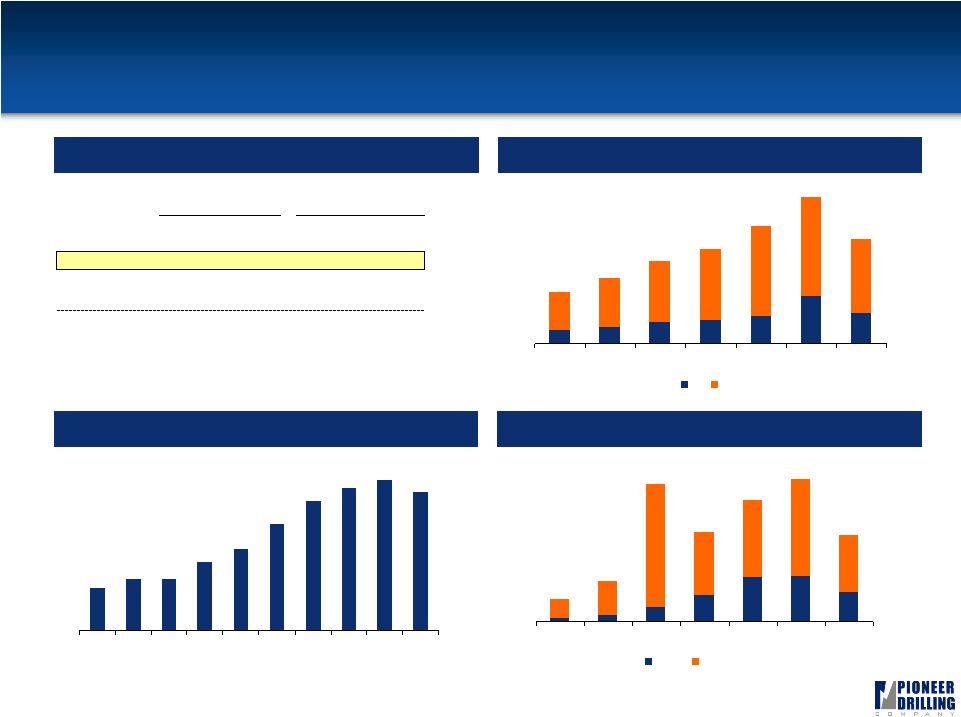 17.8%
19.5%
20.4%
21.1%
20.2%
15.0%
13.8%
13.8%
13.2%
16.0%
2000
2001
2002
2003
2004
2005
2006
2007
2008
2009
3.4
2.2
2.5
9.1
4.7
5.7
7.2
4.2
2.0
1.1
0.5
0.3
3.3
1.4
2003
2004
2005
2006
2007
2008
YTD
Sept 09
Oil FDI
Other FDI
$1.7
$3.0
$10.3
$6.7
$9.0
$10.6
$6.4
8.0
9.7
12.6
15.6
18.1
22.7
25.4
18.8
12.2
6.3
5.6
4.2
3.4
7.3
2003
2004
2005
2006
2007
2008
YTD Oct
09
Oil
Others
$13.1
$16.8
$21.2
$24.4
$30.0
$37.6
$26.8
Source: DANE (National Bureau of Statistics).
Colombia: Strong, Growing Country
1
20
Investment (% GDP)
Foreign Direct Investment ($ in billions)
World Bank Business Rankings
Exports ($ in billions)
Source: The World Bank Group (Ease of Doing Business), EIA.
S. & Central America
2008 Production
Business Rank
MBoe/d
Puerto Rico
1
1
St. Lucia
2
0
Colombia
3
601
Chile
4
11
Antigua
5
0
Argentina
23
792
Brazil
26
2,422
Ecuador
27
505
Venezuela
32
2,643
Source: Banco de la Republica (Central Bank).
Source: DANE (National Bureau of Statistics). |
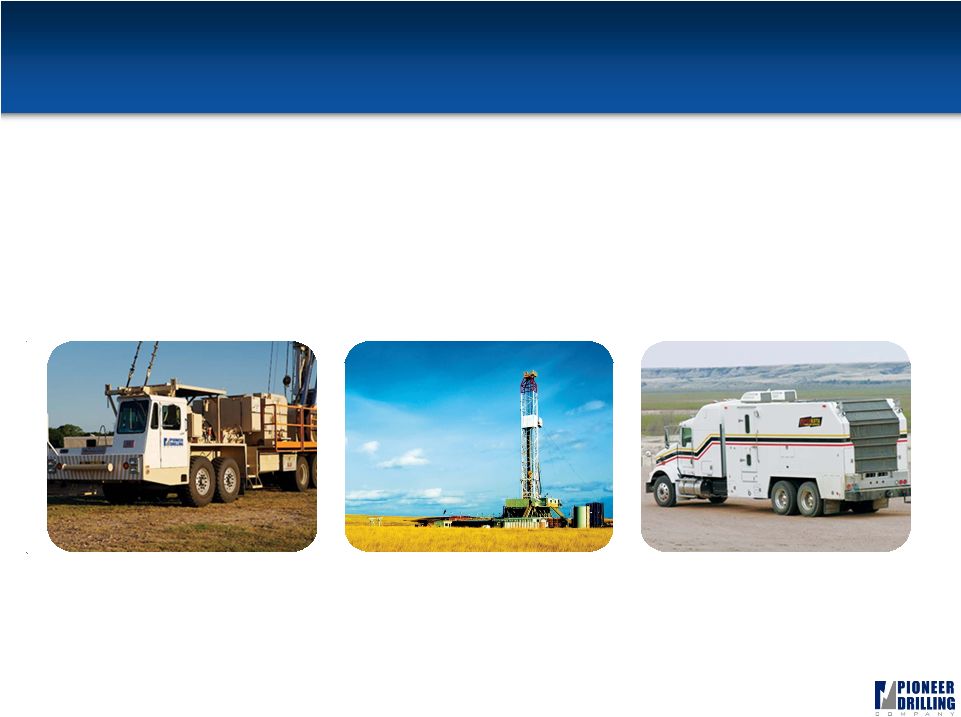 21
Financials |
 Capitalization
22
($ in millions)
March 31, 2010
Cash
$
11.0
Revolving Credit Facility ($225)
(1)
22.7
Sr. Unsecured Notes
239.5
Other
3.6
Total Debt
$
265.8
Stockholders' Equity
408.5
Total Capitalization
$
674.3
Total Liquidity
(2)
$
213.3
LTM EBITDA
$
56.4
Debt / LTM EBITDA
(3)
4.49x
Debt / Total Book Capitalization
39.4%
(1) Excludes $11.5 million of LCs outstanding.
(2) Cash + revolver availability. Revolver capacity is $225 million.
(3) Total consolidated leverage ratio as reported in form 10Q for the first quarter 2010.
|
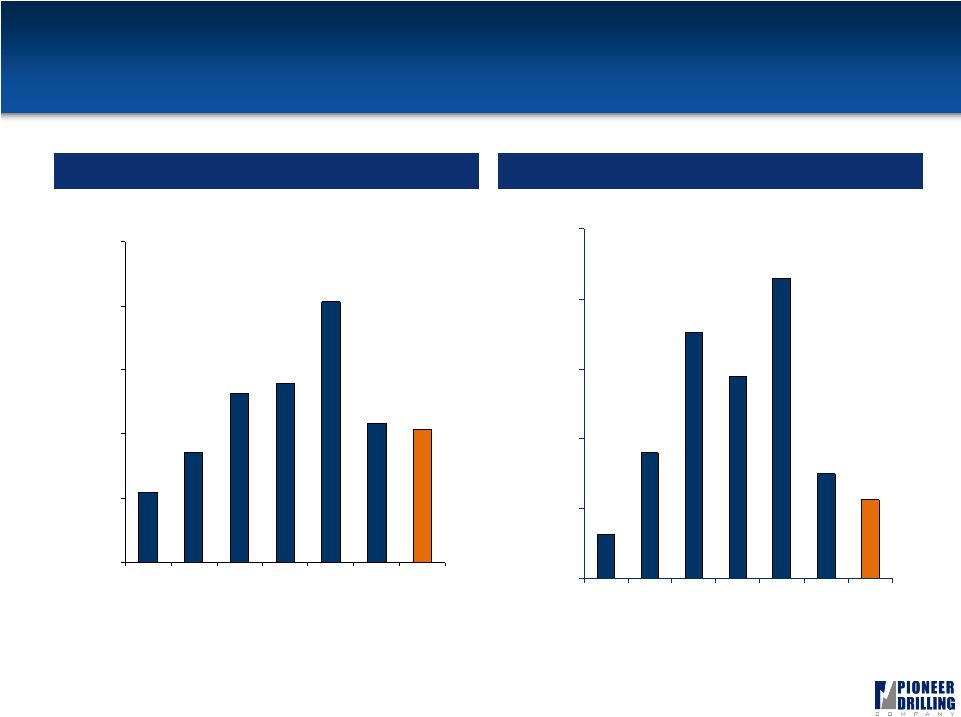 23
$163
$257
$396
$417
$610
$326
$311
$0
$150
$300
$450
$600
$750
2004
2005
2006
2007
2008
2009
TTM
$32
$90
$177
$145
$215
$75
$56
$0
$50
$100
$150
$200
$250
2004
2005
2006
2007
2008
2009
TTM
Consolidated Revenue & EBITDA
Revenue ($ millions)
EBITDA ($ millions)
Note: Fiscal year end was changed from March 31 to December 31 effective on December 31, 2007; all data
points reflect calendar year and trailing twelve months information derived from 10K and 10Q filings.
|
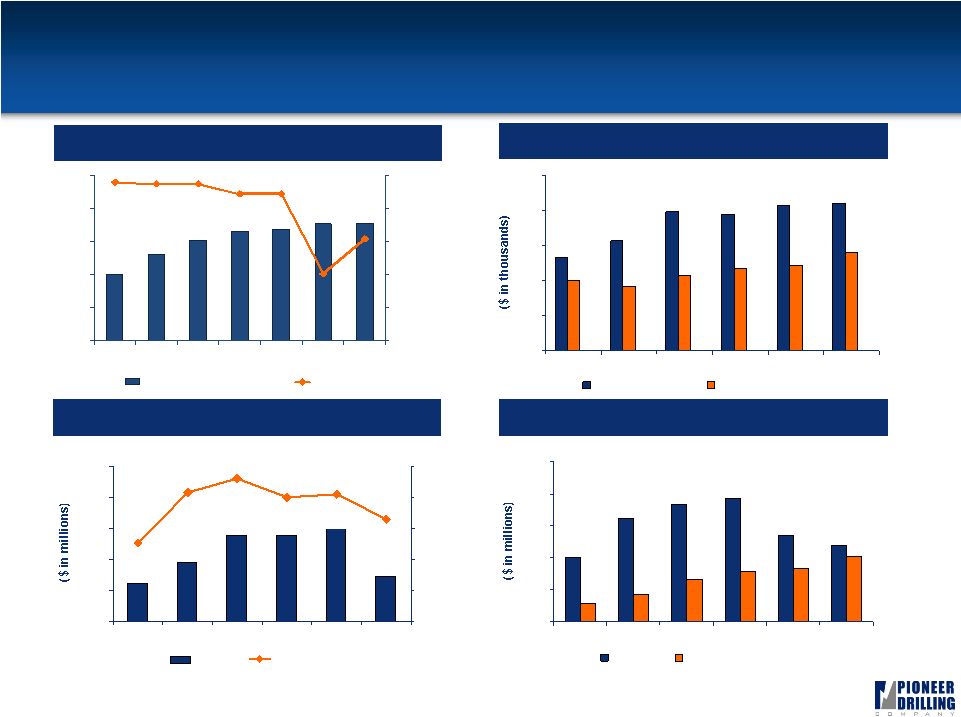 $416
$417
$220
$457
$185
$284
33%
41%
40%
46%
42%
25%
$0
$150
$300
$450
$600
$750
2004
2005
2006
2007
2008
2009
0%
10%
20%
30%
40%
50%
Revenue
% Gross Margin
24
Segment
Financials
–
Drilling
Services
Avg
Number of Rigs and Utilization
Revenues and Op Costs per Day
Revenue and Division Margin
Capex
and D&A
$13
$16
$20
$19
$21
$21
$9
$14
$12
$10
$12
$11
$0
$5
$10
$15
$20
$25
2004
2005
2006
2007
2008
2009
Revenue per Day
Daily Operating Costs
$80
$129
$147
$154
$107
$95
$81
$23
$34
$53
$64
$66
$0
$40
$80
$120
$160
$200
2004
2005
2006
2007
2008
2009
Capex
Depreciation & Amortization
(2)
(1)
40
52
61
66
67
71
71
96%
95%
95%
89%
89%
41%
62%
0%
20%
40%
60%
80%
100%
0
20
40
60
80
100
2004
2005
2006
2007
2008
2009
Current
Average Number of Rigs
Utilization
Note: Calendar year 2004, 2005 and 2006 data represent fiscal year ended March 31, 2005, 2006 and 2007,
respectively. The Company revised the fiscal year to end December 31 as of 2007. (1) Utilization
as of May 6, 2010. (2) Excludes WEDGE acquisition. |
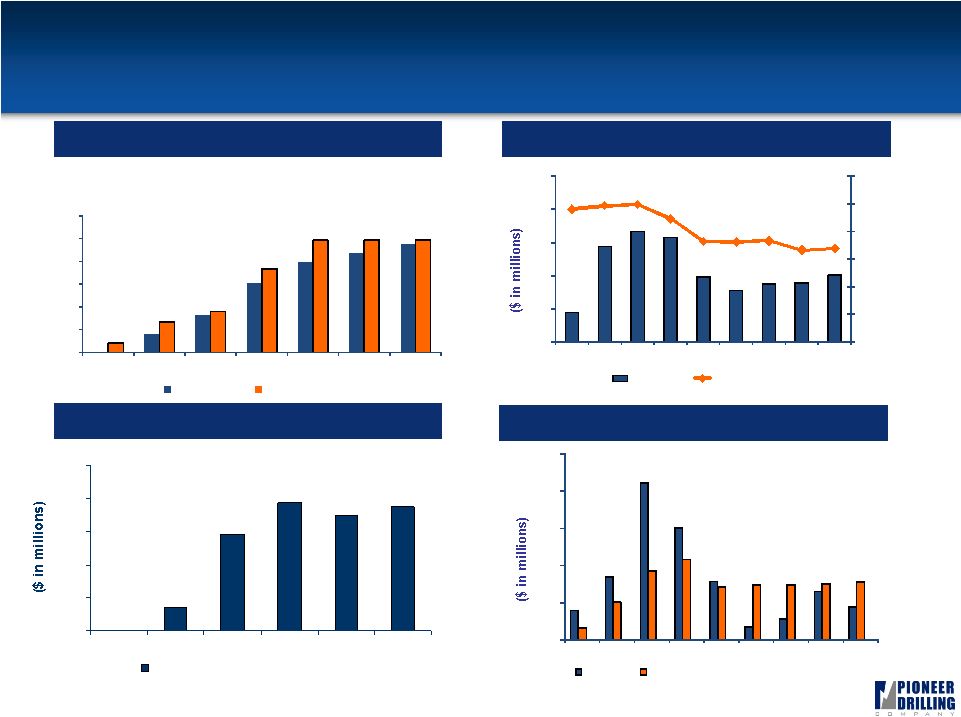 $0
$3
$12
$16
$14
$15
$0
$4
$8
$12
$16
$20
2004
2005
2006
2007
2008
2009
Gross Book Value of Equipment
25
Segment
Financials
–
Production
Services
Workover
Rigs and Wireline
Units
Revenue and Division Margin
Capex
and D&A
(1)
(1)
Fishing and Rental Services
$13
$43
$50
$47
$29
$23
$26
$27
$30
48%
49%
50%
45%
36%
36%
37%
33%
34%
0%
10%
20%
30%
40%
50%
60%
$0
$15
$30
$45
$60
$75
Q1 '08Q2 '08Q3 '08Q4 '08Q1 '09Q2 '09Q3 '09Q4 '09Q1 '10
Revenue
% Gross Margin
$3
$7
$17
$12
$6
$1
$2
$5
$4
$1
$4
$7
$9
$6
$6
$6
$6
$6
$0
$4
$8
$12
$16
$20
Q1 '08
Q2 '08
Q3 '08
Q4 '08
Q1 '09
Q2 '09
Q3 '09
Q4 '09
Q1 '10
Capex
Depreciation & Amortization
Note: Information for the years 2004 to 2007 represents workover rig and wireline unit counts and
fishing and rental tool inventory values when the Production Services business was owned by WEDGE Group.
(1) Production Services segment was purchased from WEDGE in March 2008.
0
12
24
45
59
65
71
6
20
27
55
74
74
74
0
15
30
45
60
75
90
2004
2005
2006
2007
2008
2009
May 4,
2010
Wireline
Units
Workover
Rigs |
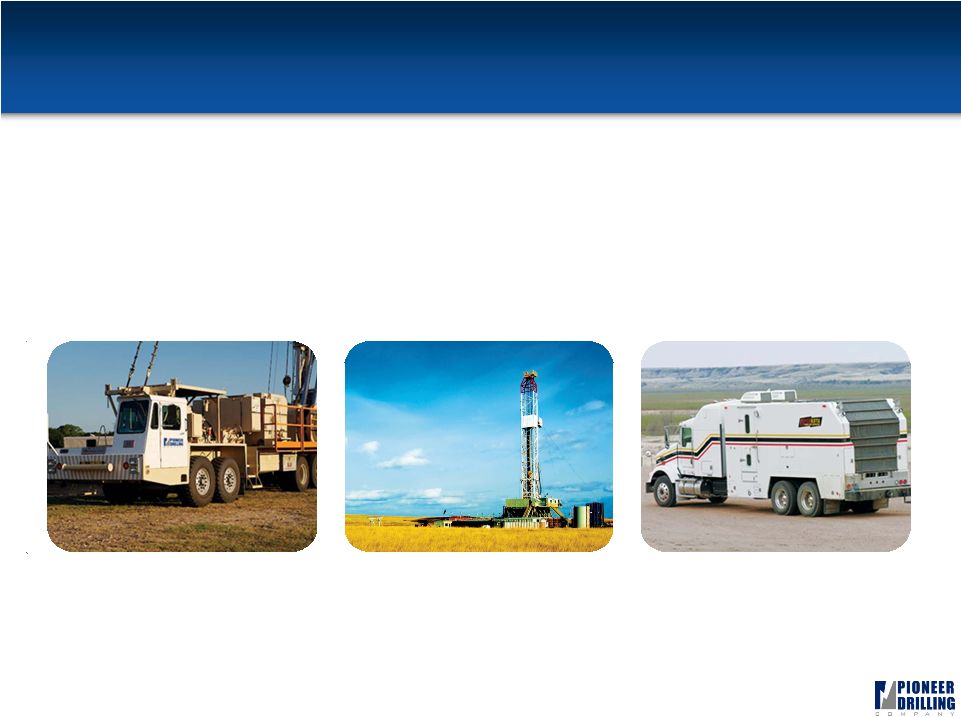 26
Appendix |
 27
Reconciliation of EBITDA to Net Income
Year ended December 31,
($ in millions)
2004
2005
2006
2007
2008
2009
EBITDA
31.7
90.3
176.6
144.5
214.8
74.9
Depreciation & Amortization
(20.6)
(30.8)
(47.6)
(63.6)
(88.1)
(106.2)
Net Interest
(1.9)
0.8
3.6
3.3
(11.8)
(8.9)
Impairment Expense
-
-
-
-
(171.5)
-
Income Tax (Expense) Benefit
(3.4)
(22.1)
(47.7)
(27.3)
(6.1)
17.0
Net Income (Loss)
5.7
38.1
84.8
56.9
(62.7)
(23.2)
TTM
($ in millions)
Q2
2009
Q3
2009
Q4
2009
Q1
2010
TTM
EBITDA
17.9
15.2
14.1
9.2
56.4
Depreciation & Amortization
(26.1)
(27.0)
(27.7)
(28.9)
(109.6)
Net Interest
(1.7)
(1.8)
(3.6)
(4.1)
(11.1)
Impairment Expense
-
-
-
-
-
Income Tax (Expense) Benefit
3.5
4.4
8.8
9.2
25.9
Net Income (Loss)
(6.3)
(9.2)
(8.4)
(14.5)
(38.4)
We define EBITDA as earnings (loss) before interest income (expense), taxes, depreciation,
amortization and impairments. Although not prescribed under GAAP, we believe the presentation
of EBITDA is relevant and useful because it helps our investors understand our operating
performance
and
makes
it
easier
to
compare
our
results
with
those
of
other
companies
that
have
different
financing,
capital
or
tax structures.
EBITDA
should
not
be
considered
in
isolation
from
or
as
a
substitute
for
net
earnings
(loss)
as
an
indication
of
operating
performance or cash flows from operating activities or as a measure of liquidity. A reconciliation of
net earnings (loss) to EBITDA is included
in
the
table
below.
EBITDA,
as
we
calculate
it,
may
not
be
comparable
to
EBITDA
measures
reported
by
other
companies.
In
addition, EBITDA does not represent funds available for discretionary use.
|
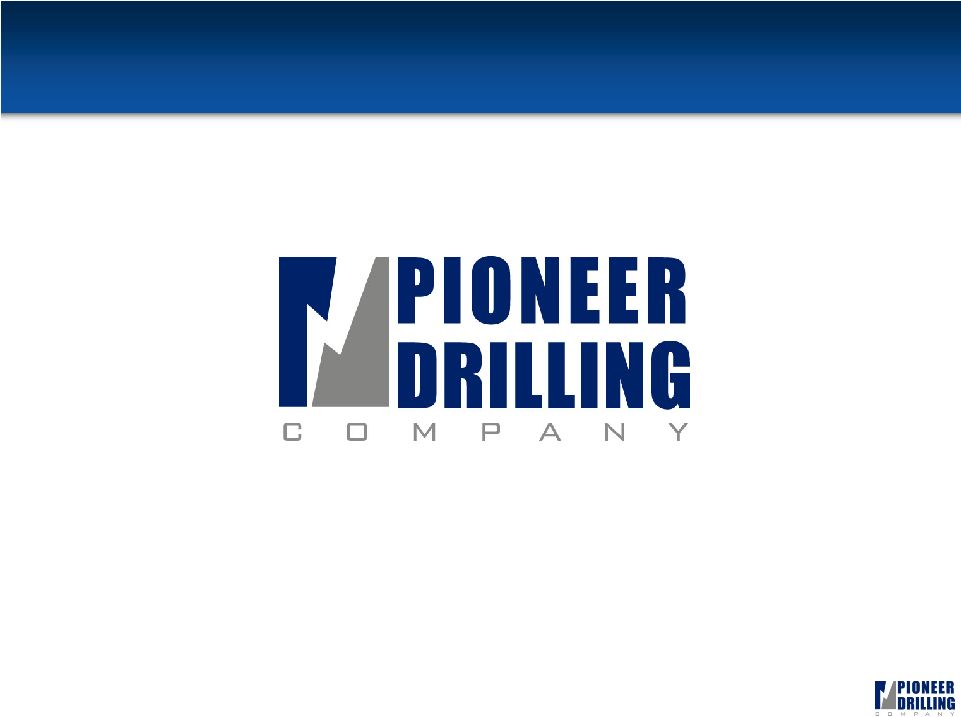 28 |
